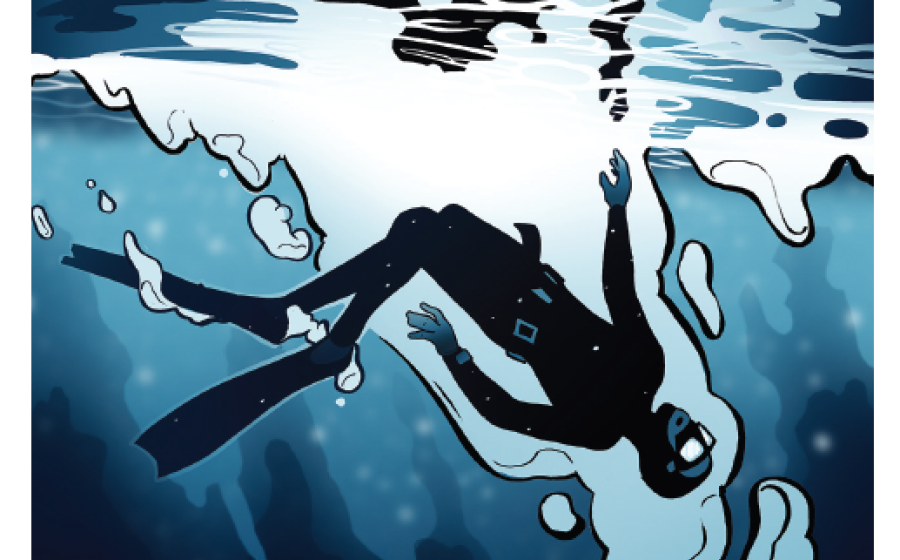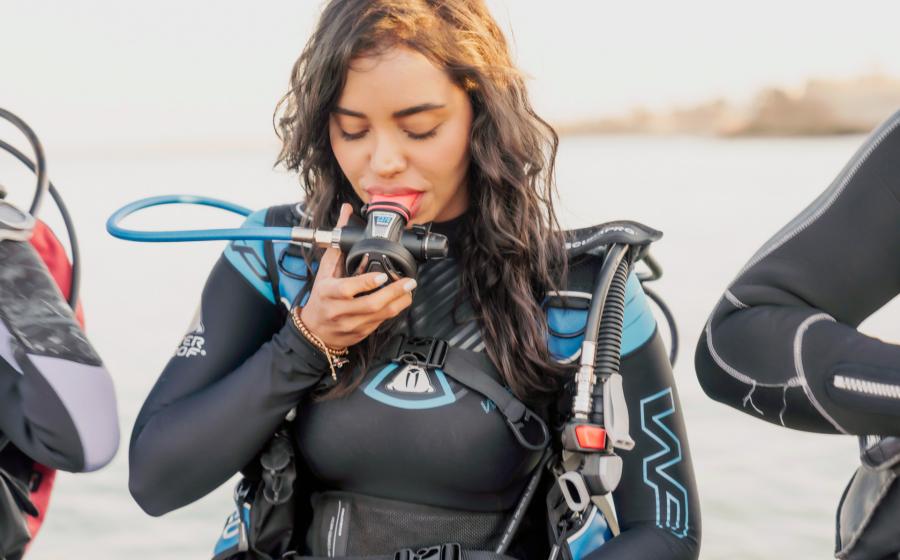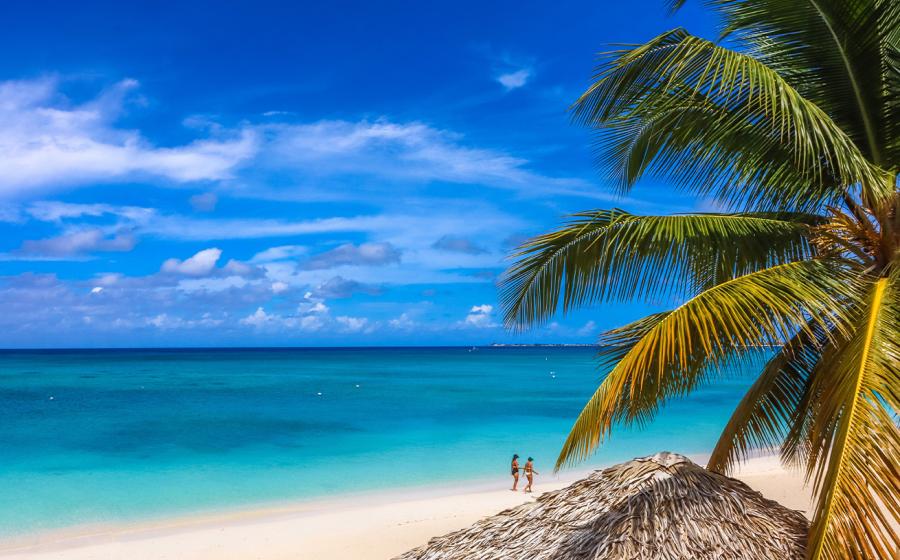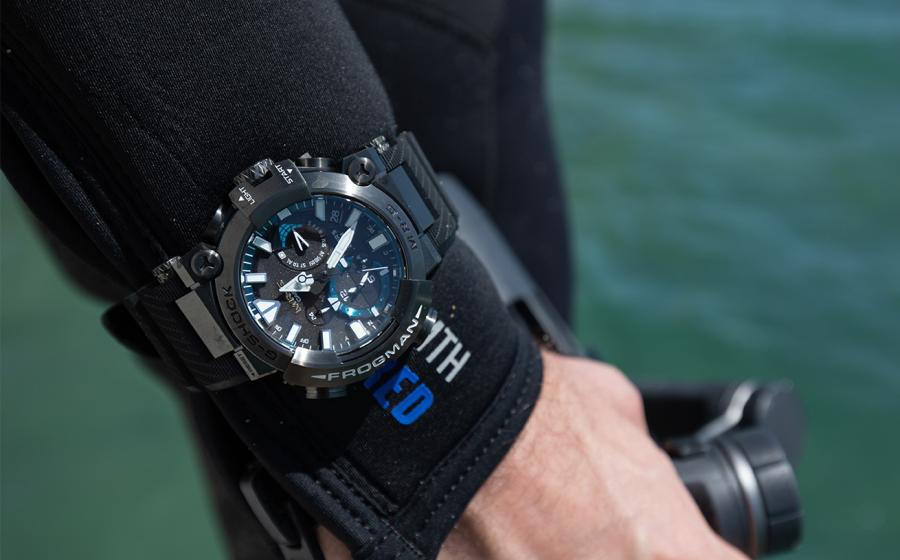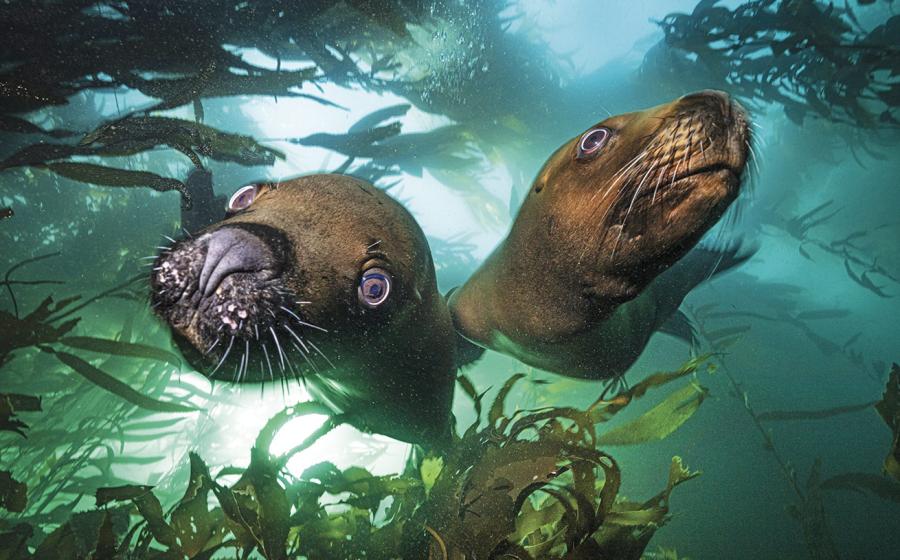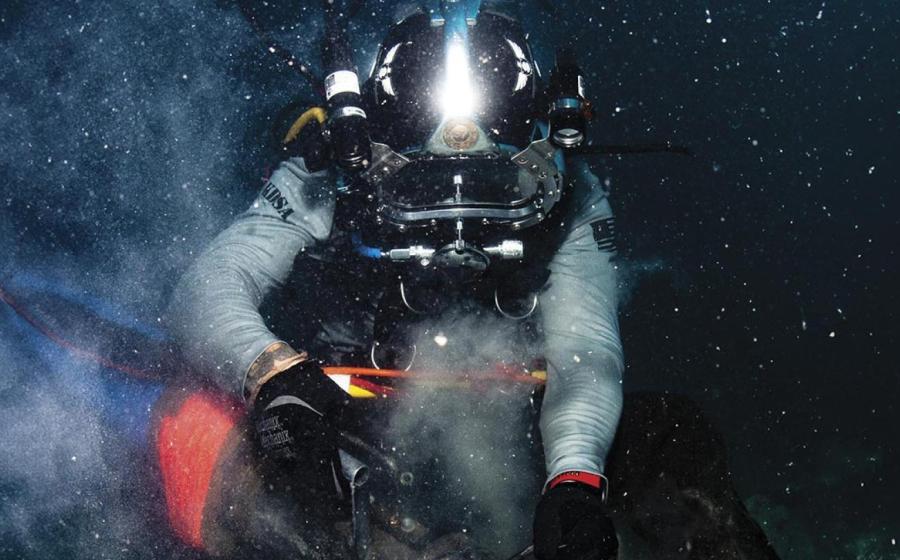Drive and Dive: Catalina!

Catalina Dive Local photo
Abi Smigel Mullens
Located 22 miles off the southern coast of California, Catalina Island is known for its pristine waters, lush kelp forests and abundant sea life. A vacation spot for celebrities, training ground for the YMCA scuba program — older divers will remember Camp Fox — and the set for several films and TV shows including the late ’50s hit Sea Hunt, Catalina is rich in history. Although the diving gives the island plenty to brag about, exciting outdoor adventures add to Catalina’s appeal.
The heart of the island is the quaint city of Avalon and, for scuba divers, the 2.2-acre underwater park at Casino Point. Created in 1962, the marine reserve secured the Avalon Underwater Park as a haven for sea life, much to the delight of divers.
The island’s signature landmark is the Casino, an impressive 12-story art-deco building overlooking the harbor. You can’t gamble in this casino, though; it’s actually a ballroom, museum and movie theater bundled into one. It also gives its name to the shore-dive site here — Casino Point — accessed by stairs leading into the water. With no surf to deal with, entry here is easy, but be sure to hang onto the rail as you descend, as the stairs can get slippery.
A few kicks out, and you’re immersed in a paradise of lush feather boa and elkhorn kelp, and as you descend deeper, giant kelp filled with an abundance of fish, including orange garibaldi, senoritas, rock wrasse and yellowtail. Oscar, a huge sheephead who apparently knows he’s protected, hangs around fearlessly, monitoring everyone’s activities. Stop to peek in the crevices of the rocky structures along the way to see who looks back at you — octopuses, crabs and lobsters love to hang out here. Sea urchins, brittle stars, sea cucumbers, hydroids, gorgonians, anemones and nudibranchs are all plentiful throughout the park too. Well marked with lights, the park is also an amazing night dive with a plethora of creatures roaming about.
There’s a monument to Jacques-Yves Cousteau in about 40 feet of water, and look for the giant black sea bass that has recently taken up residence, as well as the occasional horn or angel shark. Several small, nonpenetrable wrecks also lie scattered about. The edges of the park reach a depth of 95 feet, where you’ll find the wreck of the Sue Jack, an old schooner that has broken up over time.
There is more to diving Catalina than just the park, however. On the other end of the island is Two Harbors, easily accessible by dive boat from Avalon. The leeward side of the isthmus is lined with a variety of memorable dive sites including Bird Rock, noted for its gorgonian-covered walls plunging to a depth of 120 feet; Ship Rock, which is surrounded by thick kelp inhabited by schooling fish; and the Blue Caverns, featuring two caverns with sea fans lining the ceiling near the entrance, the perfect subject for wide-angle photography.
For the more-advanced diver, try the backside of Catalina; exposed to the open ocean, this windward side is visited much less frequently. The most requested pinnacle here is Farnsworth Banks, known for its fields of purple hydrocoral; Farnsworth gets regular visits from blue sharks, yellowtail, barracuda and sea bass in deep waters with up to 100 feet of visibility. Another pinnacle, Eagle Rock projects like a finger 80 feet up from the sandy bottom, and has many crevices and ledges to explore. Dive sites on the windward side are available through dive operators by special request and are dependent upon conditions. Be prepared for stronger currents and cooler water.
Calmer dives on the leeward side of the island include Sea Fan Grotto, a shallow cave lined with gorgonian sea fans, and Indian Rock, a rocky reef with ledges surrounded by kelp and home to a variety of sea creatures.
Located just outside the park is the wreck of the Valiant, a 163-foot-long private yacht that exploded, burned and sank off Descanso Beach in 1930. The wreck lies perpendicular to the shore, with the bow lying in 110 feet of water. You can search for the Valiant’s missing jewels, which were never recovered, but you’ll need the harbor master’s permission to dive it.
To see a little more of the island than just the water, explore inaccessible areas with a backcountry Humvee tour and learn about the island’s fascinating history along the way. Or take flight on a zip line: Five consecutive zip lines cover three-quarters of a mile across Descanso Canyon to the seashore of Descanso Beach, an exhilarating ride 300 feet above the canyon floor with panoramic views of the harbor and ocean below.
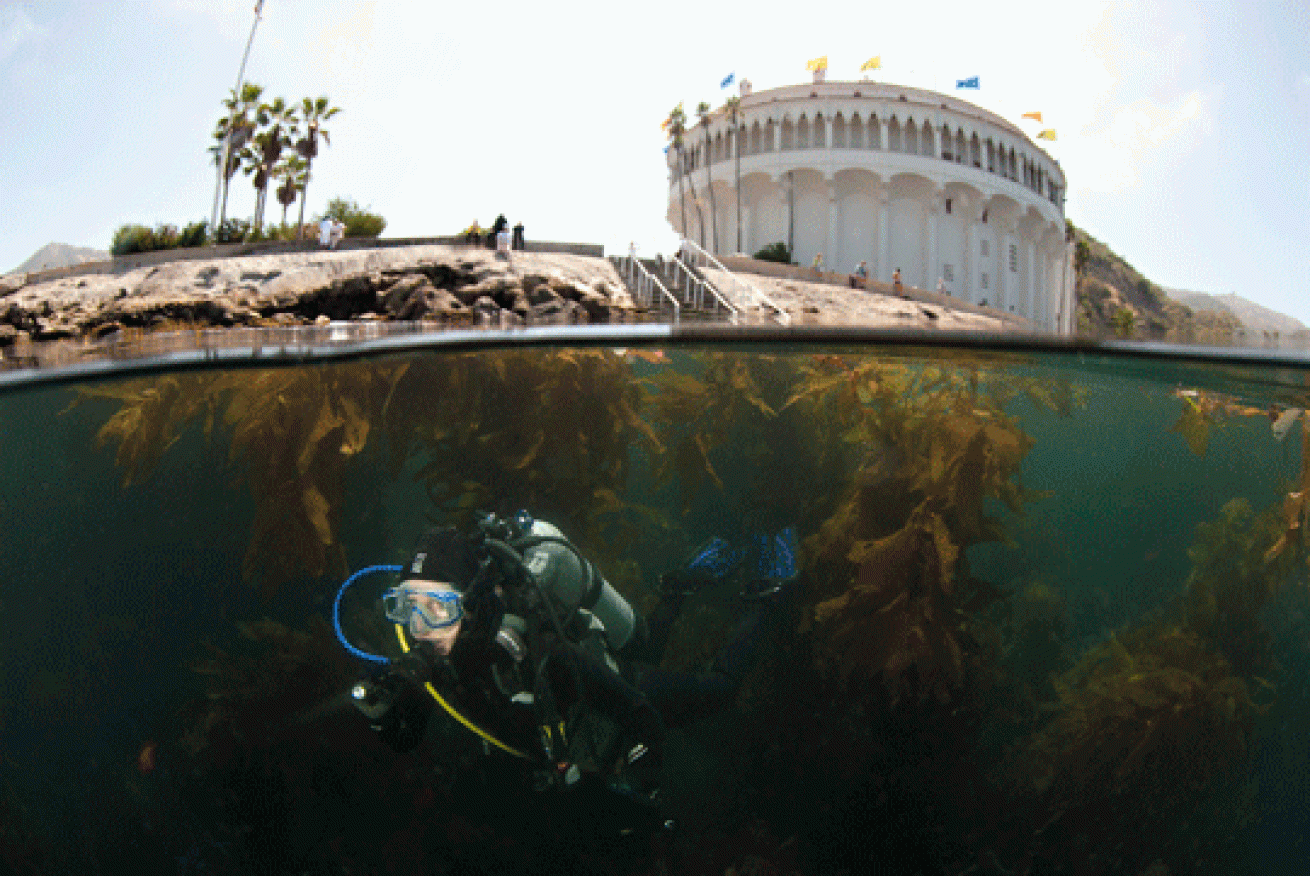
Abi Smigel Mullens
Located 22 miles off the southern coast of California, Catalina Island is known for its pristine waters, lush kelp forests and abundant sea life. A vacation spot for celebrities, training ground for the YMCA scuba program — older divers will remember Camp Fox — and the set for several films and TV shows including the late ’50s hit Sea Hunt, Catalina is rich in history. Although the diving gives the island plenty to brag about, exciting outdoor adventures add to Catalina’s appeal.
The heart of the island is the quaint city of Avalon and, for scuba divers, the 2.2-acre underwater park at Casino Point. Created in 1962, the marine reserve secured the Avalon Underwater Park as a haven for sea life, much to the delight of divers.
The island’s signature landmark is the Casino, an impressive 12-story art-deco building overlooking the harbor. You can’t gamble in this casino, though; it’s actually a ballroom, museum and movie theater bundled into one. It also gives its name to the shore-dive site here — Casino Point — accessed by stairs leading into the water. With no surf to deal with, entry here is easy, but be sure to hang onto the rail as you descend, as the stairs can get slippery.
A few kicks out, and you’re immersed in a paradise of lush feather boa and elkhorn kelp, and as you descend deeper, giant kelp filled with an abundance of fish, including orange garibaldi, senoritas, rock wrasse and yellowtail. Oscar, a huge sheephead who apparently knows he’s protected, hangs around fearlessly, monitoring everyone’s activities. Stop to peek in the crevices of the rocky structures along the way to see who looks back at you — octopuses, crabs and lobsters love to hang out here. Sea urchins, brittle stars, sea cucumbers, hydroids, gorgonians, anemones and nudibranchs are all plentiful throughout the park too. Well marked with lights, the park is also an amazing night dive with a plethora of creatures roaming about.
There’s a monument to Jacques-Yves Cousteau in about 40 feet of water, and look for the giant black sea bass that has recently taken up residence, as well as the occasional horn or angel shark. Several small, nonpenetrable wrecks also lie scattered about. The edges of the park reach a depth of 95 feet, where you’ll find the wreck of the Sue Jack, an old schooner that has broken up over time.
There is more to diving Catalina than just the park, however. On the other end of the island is Two Harbors, easily accessible by dive boat from Avalon. The leeward side of the isthmus is lined with a variety of memorable dive sites including Bird Rock, noted for its gorgonian-covered walls plunging to a depth of 120 feet; Ship Rock, which is surrounded by thick kelp inhabited by schooling fish; and the Blue Caverns, featuring two caverns with sea fans lining the ceiling near the entrance, the perfect subject for wide-angle photography.
For the more-advanced diver, try the backside of Catalina; exposed to the open ocean, this windward side is visited much less frequently. The most requested pinnacle here is Farnsworth Banks, known for its fields of purple hydrocoral; Farnsworth gets regular visits from blue sharks, yellowtail, barracuda and sea bass in deep waters with up to 100 feet of visibility. Another pinnacle, Eagle Rock projects like a finger 80 feet up from the sandy bottom, and has many crevices and ledges to explore. Dive sites on the windward side are available through dive operators by special request and are dependent upon conditions. Be prepared for stronger currents and cooler water.
Calmer dives on the leeward side of the island include Sea Fan Grotto, a shallow cave lined with gorgonian sea fans, and Indian Rock, a rocky reef with ledges surrounded by kelp and home to a variety of sea creatures.
Located just outside the park is the wreck of the Valiant, a 163-foot-long private yacht that exploded, burned and sank off Descanso Beach in 1930. The wreck lies perpendicular to the shore, with the bow lying in 110 feet of water. You can search for the Valiant’s missing jewels, which were never recovered, but you’ll need the harbor master’s permission to dive it.
To see a little more of the island than just the water, explore inaccessible areas with a backcountry Humvee tour and learn about the island’s fascinating history along the way. Or take flight on a zip line: Five consecutive zip lines cover three-quarters of a mile across Descanso Canyon to the seashore of Descanso Beach, an exhilarating ride 300 feet above the canyon floor with panoramic views of the harbor and ocean below.





